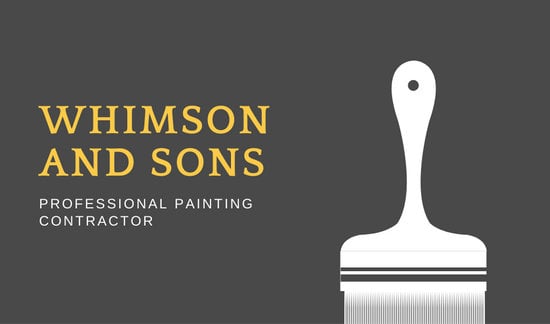Seasonal Factors In Commercial Exterior Painting: Key Insights You Need To Recognize
Seasonal Factors In Commercial Exterior Painting: Key Insights You Need To Recognize
Blog Article
Posted By-Korsholm Rodriquez
When you're planning an industrial outside paint job, seasonal factors can make or break your outcomes. paint straight line 'll want to consider how temperature level and moisture effect paint application and drying times. Selecting the ideal season can guarantee your paint sticks appropriately and lasts much longer. However which seasons are truly the best for this kind of job? Let's explore the crucial elements that can influence your project's success.
The Effect of Temperature Level on Paint Application
When you're preparing a commercial exterior paint job, the temperature level can substantially influence how well the paint sticks and dries.
Ideally, you want to paint when temperatures range in between 50 ° F and 85 ° F. If it's too chilly, the paint might not heal properly, bring about concerns like peeling or cracking.
On the other side, if it's also warm, the paint can dry too promptly, preventing appropriate adhesion and causing an uneven surface.
You should additionally consider the moment of day; early morning or late afternoon supplies cooler temperature levels, which can be a lot more beneficial.
Always examine the manufacturer's suggestions for the specific paint you're using, as they typically provide support on the suitable temperature level array for ideal results.
Humidity and Its Impact on Drying Times
Temperature level isn't the only ecological element that affects your commercial exterior paint task; humidity plays a significant duty as well. High humidity degrees can slow down drying times considerably, impacting the total high quality of your paint work.
When the air is filled with dampness, the paint takes longer to heal, which can lead to concerns like poor adhesion and a higher danger of mildew growth. If mouse click the next web site on an especially moist day, be planned for extended delay times in between layers.
It's crucial to check regional weather conditions and plan appropriately. Preferably, aim for humidity degrees in between 40% and 70% for optimum drying.
Keeping these consider mind ensures your project remains on track and provides a long-term surface.
Best Seasons for Commercial Outside Painting Projects
What's the most effective season for your commercial exterior painting jobs?
Spring and very early loss are commonly your best choices. During these periods, temperature levels are moderate, and humidity degrees are frequently reduced, developing ideal problems for paint application and drying out.
Avoid summer season's intense heat, which can cause paint to dry too swiftly, resulting in bad attachment and surface. Similarly, exterior painting st paul can hinder correct drying out and curing, taking the chance of the durability of your paint work.
Aim for days with temperatures in between 50 ° F and 85 ° F for optimum results. Bear in mind to check the regional weather report for rainfall, as wet problems can ruin your project.
Planning around these aspects guarantees your paint job runs smoothly and lasts longer.
Verdict
Finally, preparing your business exterior paint projects around seasonal factors to consider can make a significant difference in the outcome. By scheduling work during the optimal temperatures and humidity levels, you'll ensure far better attachment and drying out times. Keep in mind to watch on regional weather prediction and choose the right time of year-- springtime and very early autumn are your best choices. Taking these actions will assist you achieve a sturdy and expert surface that lasts.
